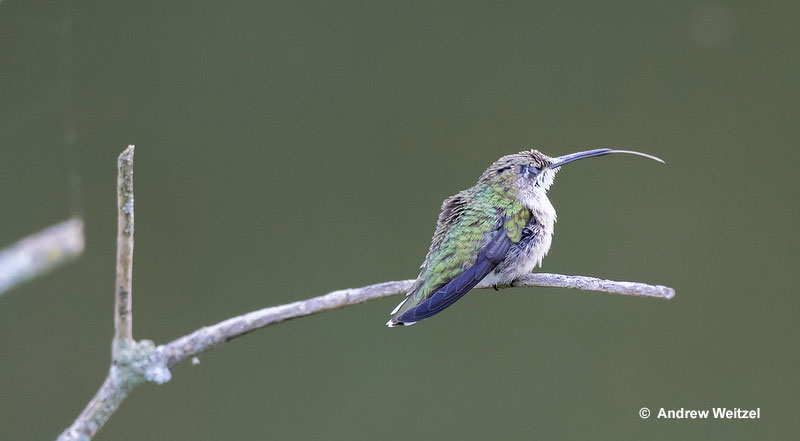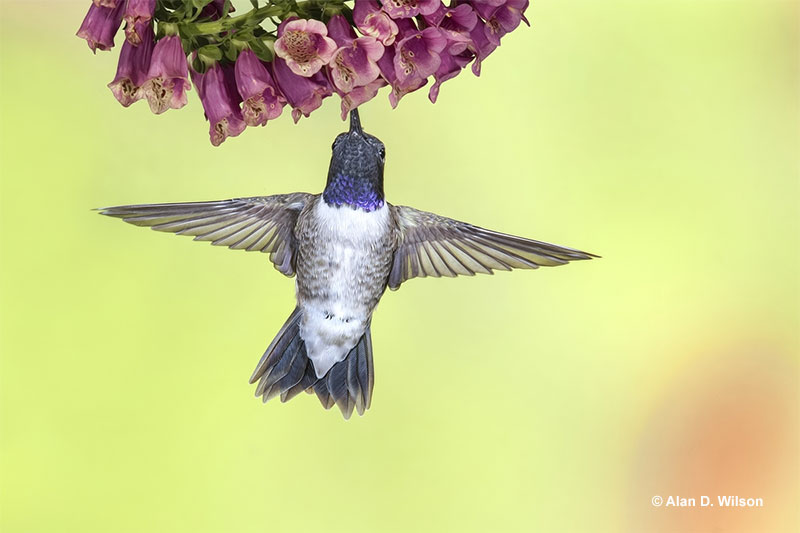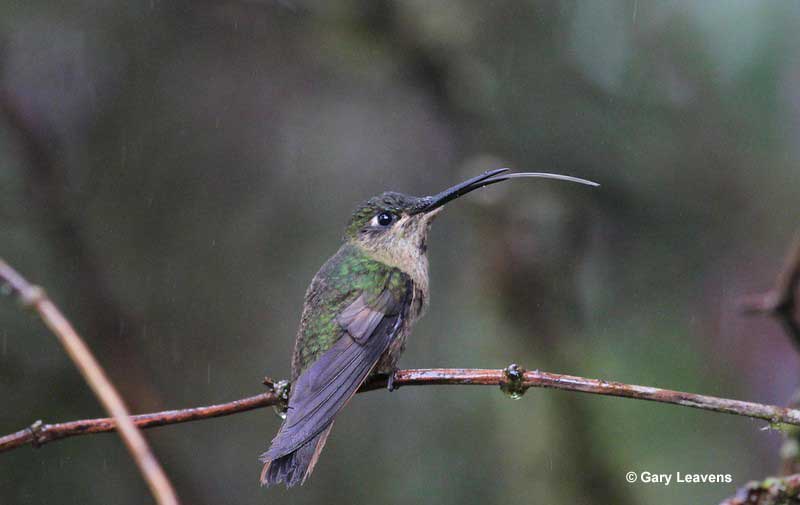
Hummingbirds are amazing little birds with shining plumage and feisty attitudes. These tiny beauties are impressive in other ways too, one of them being their long tongues!
I see hummingbirds at my backyard feeder and I get mesmerized by their whirring wings and rapid movements. After feeding, they often perch and surprise me by sticking out their long red tongues!
Why do hummingbirds have such long tongues? Are hummingbird tongues special or different from other birds?
Key takeaways:
- Although it doesn’t look that way, hummingbirds are hiding their impressive tongues in their bills.
- When gathering nectar, their tongue shoots out, but it’s not straw-like, as many believe.
- Anatomically, hummingbird tongues connect to the top of their skulls.
Hummingbird Tongue Anatomy
Hummingbirds have tongues highly evolved to take in nectar as quickly as possible. To make that happen, their tongues have specialized tips and wrap around the inside of their skulls.
In a sense, a hummingbird’s tongue starts inside its skull, near its eyes! At that point, two narrow, tube-like muscles go back along the top of the bird’s skull, wrap behind it, and then underneath it.
Related: Bird tongues – how they work
The two muscles continue along the underside of the jaw and then meet to form one tongue muscle before coming up into and out of the bird’s mouth.
At this point, the hummingbird’s tongue looks like a flat, tube-like structure with a sharp tip. When we see hummingbird extend their tongue out of their beak, this is what we usually see.
However, if we could look at it in a microscope, we would see that the tip of the bird’s tongue has small feathery structures. If we could see the tongue as it lapped up nectar, we would also see that the tongue “unzips” to form a small forked tip!
As the tip of the tongue opens and closes, the tiny feathery structures known as “lamellae” also unfurl and then connect back together again.
How Long Is A Hummingbird’s Tongue?
Watch hummingbirds for a while, and you can’t help but notice that they have surprisingly long tongues! As they perch between feeding bouts, hummingbirds often stick their tongues out, seemingly stretching and/or cleaning them.
At times, their tongue looks just as long as their beak but it’s hard to tell just exactly how long they are. The length of a hummingbird’s tongue depends on the species but, in general, most hummingbirds have tongues as long as their heads.
That is, if we could measure the length from the back of the bird’s head to the tip of its bill, that’s how long their tongue is. Their tongue needs to be long enough to both exit their beaks and also reach deep inside the flowers they feed on.
For familiar hummingbirds like the Ruby-throated Hummingbird and Anna’s Hummingbird, this means that their tongues are around one and a half inches long. Given that these birds are just 3.75 to 4 inches long, that would be like having a tongue nearly one third as long as your body!
In general, short-billed hummingbirds have short tongues. However, some tropical species with long, curved beaks have long tongues that reach 3 and even 4 inches!
How Do Hummingbirds Use Their Tongues?
With such long tongues, it’s hard to know how they really use them. In the past, it was assumed that hummingbird tongues acted just like straws. Since they looked like tubes, maybe the birds used them to sip up nectar?

That was a logical conclusion; after all, when hummingbirds stick their beak into a flower, we can’t see how they use them.
However, detailed studies eventually revealed just how hummingbirds use their tongues to feed, and it’s nothing like a straw. As it turns out, after a hummingbird sticks its beak into a flower, it barely opens the tip of its bill and quickly sticks its tongue in and out.
As the bird’s tongue goes out, the forked tip splits. It comes back together as the tongues gets retracted back into its bill. During that process, the microscopic brushy appendages on the tip trap or soak up bits of nectar and bring that essential food into the bird’s beak.
The hummingbird does this over and over, each time, its specialized tongue bringing in bits of nectar or sugar water. They have to use their tongues to drink nectar. As far as is known, this is the only way hummingbirds can take in this food source.
Fun Facts About Hummingbird Tongues
- Hummingbirds can flick their tongue in and out 15 to 20 times per second.
- Hummingbird tongues have grooves that help them drink nectar.
- The length of a hummingbird’s tongue is related to the flowers they feed on. Species adapted to feeding on longer, tubular flowers have longer beaks with longer tongues than other species.
- Instead of acting like straws or picking up nectar with capillary action, hummingbird tongues take in nectar like efficient micro-pumps.
- If a hummingbird’s tongue looks swollen and the bird holds it outside of its beak, it probably has an infection. This can be caused by dirty hummingbird feeders or giving them sugar water that is too sweet (more than the suggested one to four ratio of sugar to water).
- Hummingbirds eat small insects but they don’t use their tongues to catch them. Instead, they snap up tiny bugs with their beaks.
Frequently Asked Questions
How does a hummingbird’s tongue work?
A hummingbird’s tongue works like a micro pump. When extended, the tip of the tongue splits and tiny structures gather nectar. Then, as the tongue comes back into the beak, the tip closes and brings the captured nectar into its mouth.
What hummingbird has the longest tongue?
The hummingbird with the longest tongue is the Sword-billed Hummingbird. This Andean hummingbird species has a four inch long tongue!
Is a hummingbird’s tongue hollow?
No, a hummingbird’s tongue is not hollow. However, it does have grooves on it that help the bird drink nectar.
Can a hummingbird open its mouth?
Yes, a hummingbird can open its mouth, although they rarely do so. Mostly, they just open their bill a little bit, so that their tongue could shoot out.


